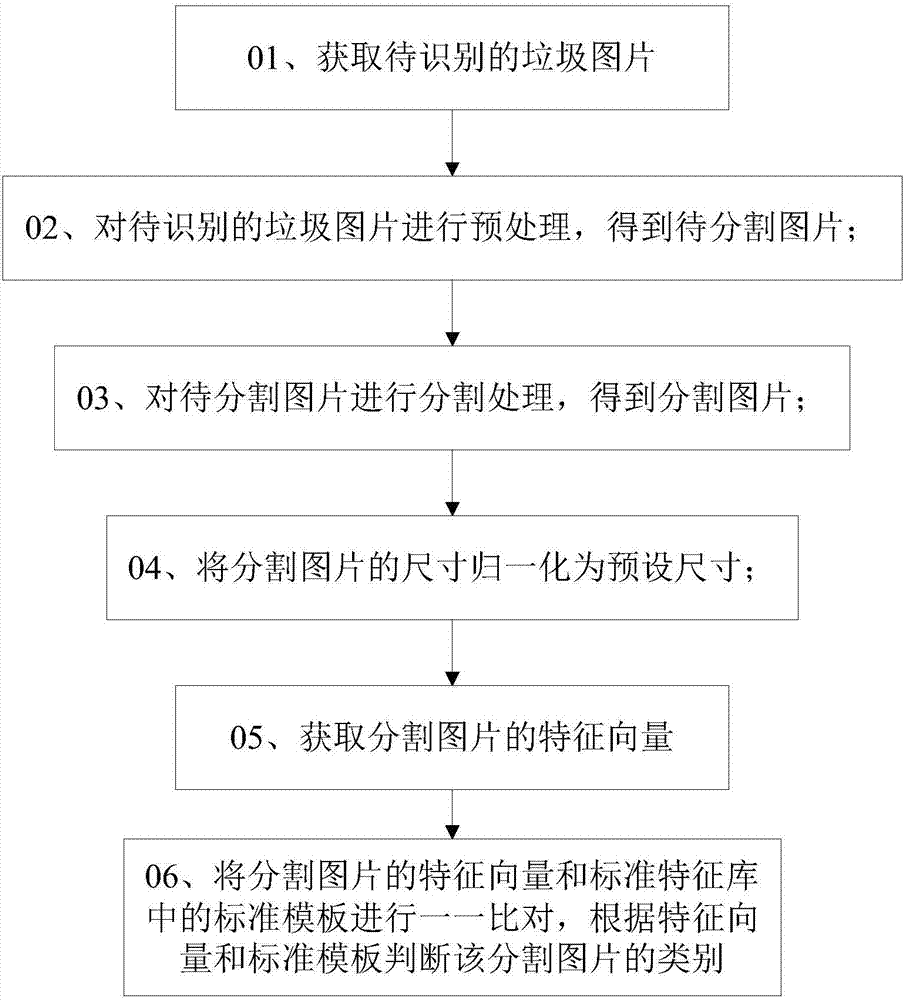Garbage classification method, device and system based on image identification
A technology of garbage classification and image recognition, which is applied in image analysis, image data processing, character and pattern recognition, etc. It can solve problems such as difficulty in accurate classification of types of garbage, difficulty in accurately judging classification, lack of garbage classification, etc., to improve the living environment quality, waste disposal reduction, and workload reduction effects
- Summary
- Abstract
- Description
- Claims
- Application Information
AI Technical Summary
Problems solved by technology
Method used
Image
Examples
Embodiment Construction
[0037] Below, in conjunction with accompanying drawing and specific embodiment, the present invention is described further:
[0038] Garbage classification methods based on image recognition, such as figure 1 shown, including the following steps:
[0039] Step 01. Obtaining garbage pictures to be identified;
[0040] Step 02. Preprocessing the garbage pictures to be identified to obtain the pictures to be segmented;
[0041] Specifically, the preprocessing includes the following sub-steps: decoding the garbage picture, denoising and removing interference points to obtain the picture to be divided.
[0042] Filter the junk image to remove noise with pixel heights of 1 and 2, so that subsequent processing can be performed better. The process of filtering and removing interference points is a prior art, and will not be repeated here.
[0043] Step 03, performing segmentation processing on the image to be segmented to obtain the segmented image;
[0044] The segmentation proc...
PUM
 Login to View More
Login to View More Abstract
Description
Claims
Application Information
 Login to View More
Login to View More - Generate Ideas
- Intellectual Property
- Life Sciences
- Materials
- Tech Scout
- Unparalleled Data Quality
- Higher Quality Content
- 60% Fewer Hallucinations
Browse by: Latest US Patents, China's latest patents, Technical Efficacy Thesaurus, Application Domain, Technology Topic, Popular Technical Reports.
© 2025 PatSnap. All rights reserved.Legal|Privacy policy|Modern Slavery Act Transparency Statement|Sitemap|About US| Contact US: help@patsnap.com


